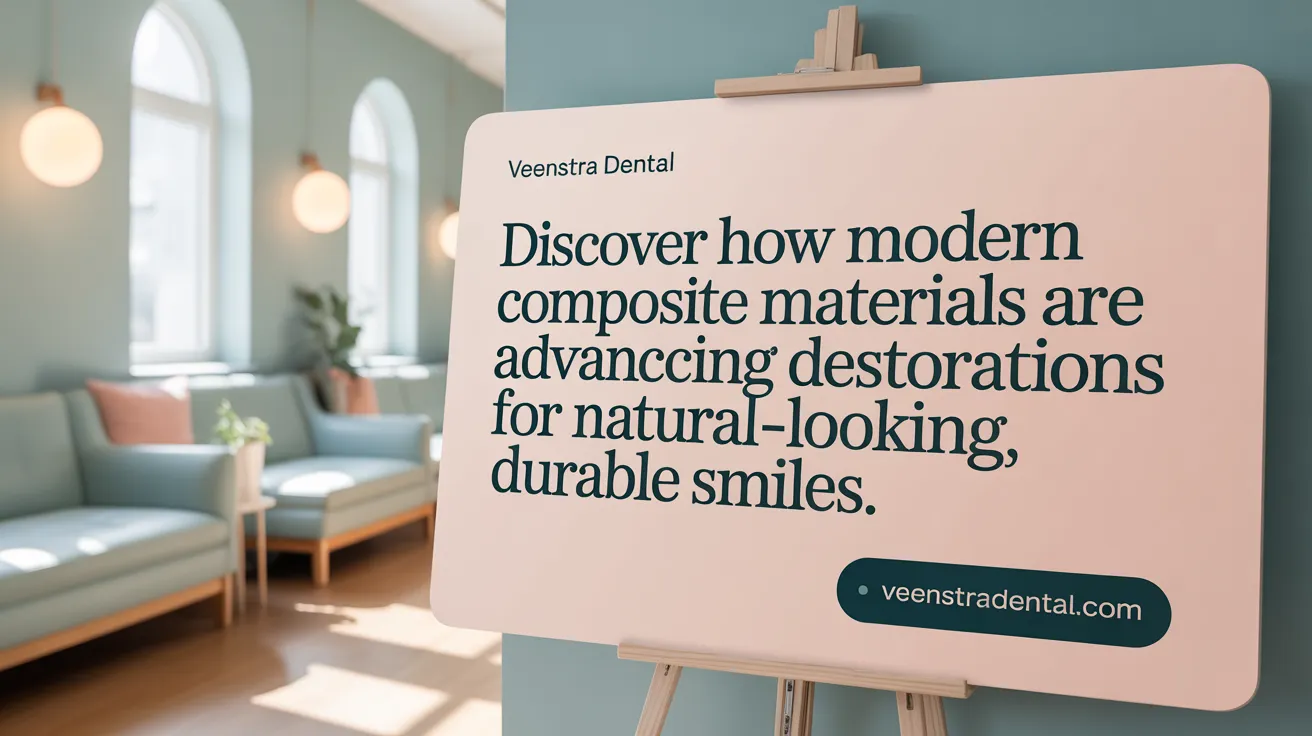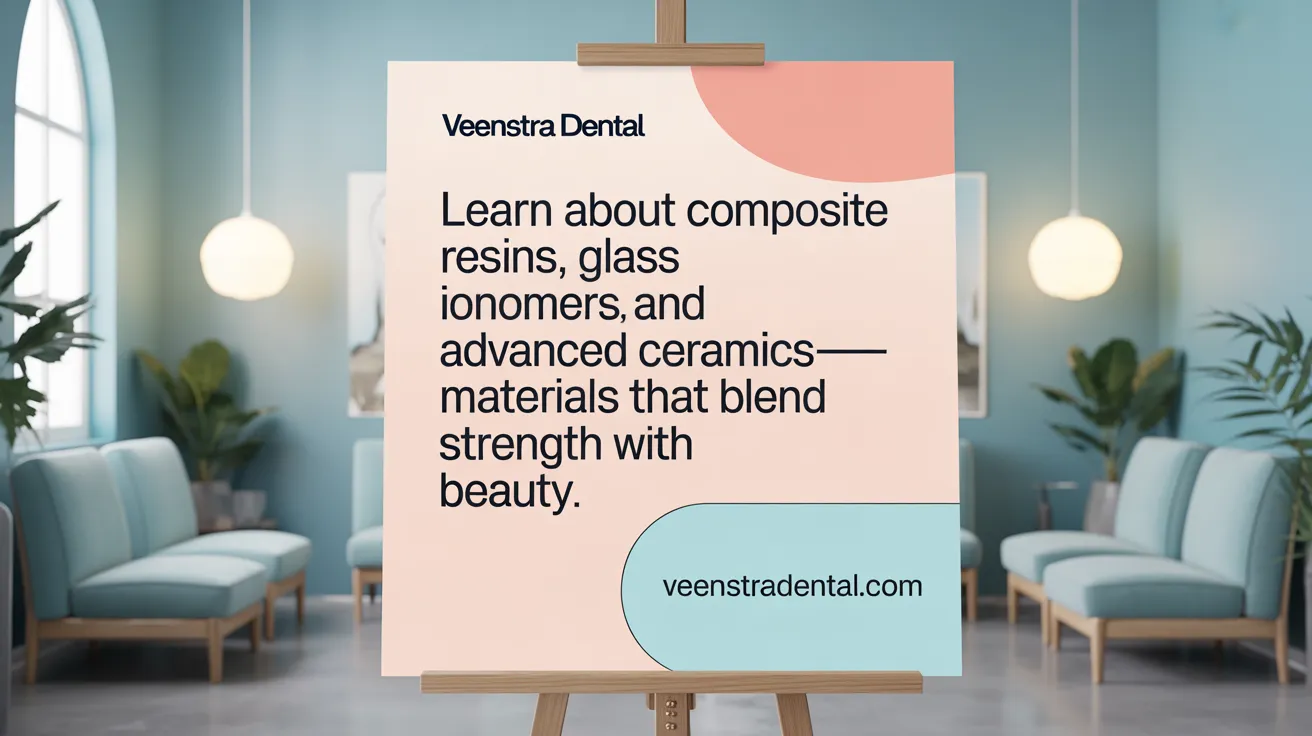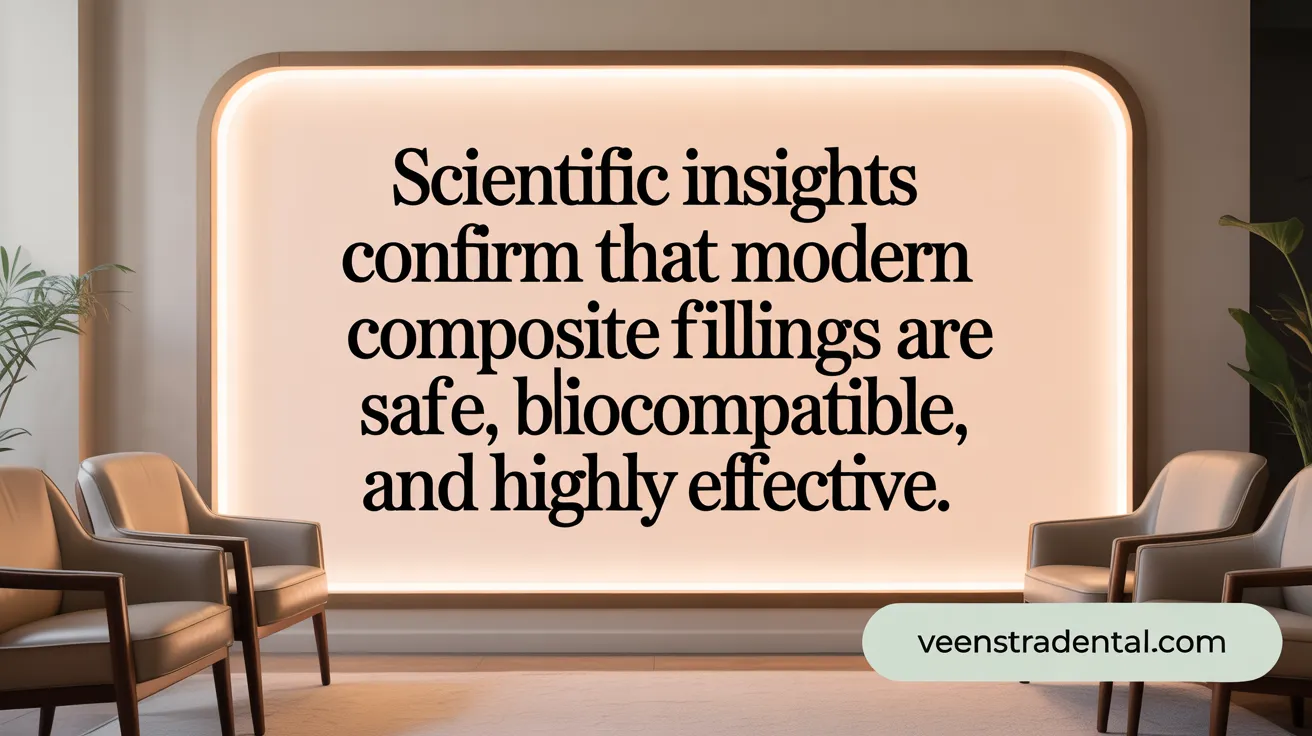The Rise of Tooth-Colored Fillings in Modern Dentistry
Tooth-colored fillings have revolutionized dental restorations by offering a seamless blend with natural teeth alongside functional durability. As patients increasingly prioritize aesthetics and longevity, understanding the statistical trends and factors driving the preference for these fillings is essential. This article explores the interplay between aesthetic appeal and longevity, grounded in data and current research, to uncover why tooth-colored fillings are shaping the future of cosmetic dentistry.
Key Facts List on Tooth-Colored Fillings and Aesthetics
- Recent study in Israel analyzed over 650,000 dental cases showing 34% of amalgam restorations were replaced mainly due to aesthetic concerns.
- Composite fillings are made from resin and glass or ceramic particles, allowing mimicry of natural teeth and seamless integration.
- Aesthetic preferences favor tooth-colored composites because they bond directly to tooth structure and offer custom color matching.
- Composite fillings typically last between 5-10 years, but with advanced materials, they can last up to 15 years with proper care.
- Modern composites benefit from enhanced bonding and tougher formulations, improving longevity and durability.
- Scientific research confirms that composite fillings are safe and highly effective, meeting standards from health authorities like the FDA.
- Factors influencing the longevity of composite fillings include size, placement, patient habits, and professional skill during application.
- The cost of composite fillings averages $100-$400 per tooth, being more expensive than amalgam but offering better aesthetic and health benefits.
- Advances such as nanotechnology, bioactive materials, and digital fabrication are consistently improving the strength, lifespan, and aesthetics of tooth-colored restorations.
- Emerging trends focus on smart composites that can actively support oral health by releasing anti-cavity agents and adapting to the environment.
1. Aesthetic Superiority Driving Patient and Practitioner Preference
What statistical data is available on aesthetic preferences for tooth-colored fillings among patients and dental practitioners?
Recent research underscores a clear trend toward favoring tooth-colored composite restorations over traditional amalgam fillings. A comprehensive retrospective study conducted in Israel examined over 650,000 dental cases, revealing that both patients and practitioners predominantly prefer composite materials.
Approximately 34% of amalgam restorations were replaced mainly due to aesthetic concerns. This statistic highlights how appearance influences decisions about dental restorations. Patients increasingly value natural-looking restorations that blend seamlessly with their teeth, and practitioners recognize this demand.
The study found that composite fillings, which are made to match the shade and translucency of natural teeth, significantly enhance the visual outcome of dental work. When compared to amalgam, which is metallic and easily visible, composite materials are virtually unnoticeable once placed. Their ability to mimic natural teeth makes them highly desirable.
Reasons behind aesthetic preference
Aesthetic considerations are central to the choice of material. Composite fillings are designed to bond directly to the tooth structure, allowing for highly customized shaping and color matching. This seamless integration creates a natural appearance that cannot be achieved with metallic fillings.
Furthermore, the aesthetic advantage extends beyond appearance. Patients report greater satisfaction with composite restorations because they look and feel more like their natural teeth. This preference is reinforced by societal trends emphasizing cosmetic dental treatments.
Composite fillings’ ability to mimic natural tooth appearance
Composite materials are crafted from a mixture of plastic resin and fine glass or ceramic particles. This combination results in a durable, tooth-colored material that can be layered and cured with a special light to achieve a lifelike translucency and shade. Dental practitioners can custom-match the composite to individual teeth, ensuring the restoration is virtually invisible.
The layering technique enables the composite to imitate the depth and texture of natural enamel. As a result, restorations are not only functional but also aesthetically pleasing, making composite fillings the go-to choice for visible areas such as front teeth.
Impact of aesthetics on restoration replacement rates
Studies indicate that the aesthetic appeal of composite fillings influences their longevity and the rate of replacement. Recognizing their superior appearance, many patients opt to replace older or less attractive amalgam fillings with composite material, even when the original fillings are still functional.
In some cases, aesthetic concerns prompt earlier replacements, reducing the lifespan of existing restorations. However, modern composite materials are engineered to last 10 to 15 years or more, especially with proper care. The desire for a natural look often results in more frequent updates, but these choices enhance overall satisfaction.
Patient and practitioner satisfaction
Both patients and dental practitioners show high satisfaction levels with composite restorations. Patients appreciate the natural look, which boosts confidence and satisfaction with their smile. Dentists favor composite because of its bonding strength, versatility, and aesthetic consistency.
The preference for composite is reflected in their widespread adoption in cosmetic dentistry. As technology improves and new resin formulations are developed, the satisfaction continues to grow. This trend influences dental education, training, and practice standards, emphasizing aesthetic outcomes.
| Aspect | Details | Additional Insights |
|---|---|---|
| Preference Trends | 34% of amalgame replacements due to aesthetics | Large sample size underscores widespread preference |
| Material Composition | Resin combined with glass or ceramic particles | Mimics natural tooth translucency and color |
| Longevity | Often between 5-10 years; can extend to 15 | Proper care essential for durability |
| Patient Satisfaction | High due to natural appearance | Boosts confidence and quality of life |
| Practitioner Satisfaction | High bonding strength and versatility | Facilitates conservative restorations |
This ongoing preference for tooth-colored composites reflects an evolving standard in dentistry—one that prioritizes aesthetics alongside functionality. As research continues and materials advance, composite fillings are set to remain the favored choice for restoring natural teeth and maintaining beautiful smiles.
2. Longevity Insights: Balancing Durability with Aesthetic Benefits

How do the longevity and durability of tooth-colored fillings compare to traditional amalgam fillings?
Amalgam fillings are renowned for their durability. They tend to last more than 15 years in many cases, making them a long-standing option for restoring molars subject to heavy biting forces.
In contrast, composite resin fillings, which are tooth-colored, typically last between 5 to 10 years, although high-quality composites can reach 10-15 years with excellent care. While they offer superior aesthetics and bond directly to the tooth structure, their durability generally does not match that of amalgam.
Research indicates that amalgam's crack and fracture resistance is superior, especially in high-stress areas. This makes amalgam a preferred choice for large restorations in back teeth.
However, recent advances in composite materials and application techniques have significantly improved their longevity. Modern composites benefit from enhanced bonding and tougher formulations, allowing them to perform well over many years.
The decision often depends on individual needs, balancing the longer lifespan of amalgam with the natural look of composite fillings. For patients prioritizing aesthetic appeal, composites offer an effective compromise, lasting many years with proper maintenance.
Types, Materials, and Characteristics of Tooth-Colored Fillings
 Tooth-colored fillings mainly consist of composite resin and glass ionomer materials. Composite resin is made from plastic resins combined with silica or quartz fillers, which give it durability, strength, and an excellent aesthetic match to natural teeth. These fillings are bonded directly to the tooth, providing additional support and reducing the risk of fractures.
Tooth-colored fillings mainly consist of composite resin and glass ionomer materials. Composite resin is made from plastic resins combined with silica or quartz fillers, which give it durability, strength, and an excellent aesthetic match to natural teeth. These fillings are bonded directly to the tooth, providing additional support and reducing the risk of fractures.
Glass ionomer fillings, on the other hand, are composed of silicate glass and polyacrylic acid. They release fluoride over time, which helps prevent further decay and supports remineralization of the tooth. This makes them suitable for small restorations and areas with less chewing force.
Compared to traditional amalgam fillings, tooth-colored options offer significant advantages in appearance, blending seamlessly with the natural tooth. They are mercury-free and considered safer and more environmentally friendly.
In terms of lifespan, composite resin fillings typically last between 5 to 10 years, though with proper care, some can last over a decade. Glass ionomers tend to have a shorter lifespan, often around 5 years, depending on placement location and oral habits.
Beyond these materials, ceramics and porcelains are used in indirect restorations like inlays and crowns. These materials are highly stain-resistant and can last 15 years or more, offering a durable, aesthetic choice for larger restorations. Proper oral hygiene and routine dental check-ups are crucial in maintaining all types of tooth-colored fillings for their maximum lifespan.
Safety and Efficacy of Tooth-Colored Fillings Based on Research

What does research show about the safety and efficacy of tooth-colored fillings?
Scientific studies and regulatory reviews have shown that tooth-colored fillings, also known as composite resin fillings, are both safe and designed to be highly effective in dental restorations.
These fillings are made from a mixture of plastic resins and glass or ceramic particles that match the natural color of teeth. Before being used widely, they undergo rigorous testing to meet standards set by authorities such as the FDA. This ensures their physical durability, biocompatibility, and longevity.
Research indicates that composite fillings typically last between five to ten years, with some lasting more than a decade if properly maintained. Although they may have a higher chance of failure or secondary decay than amalgam in very long-term use, they tend to perform well in the short to medium term.
A significant benefit of composite fillings is their safety profile. They are free from mercury and other potentially harmful metals, reducing health and environmental concerns associated with traditional silver amalgam fillings.
Potential issues like sensitivity or allergic reactions to materials used in composites are extremely rare. Overall, the scientific consensus supports the use of composite fillings as a safe, reliable choice that restores both the function and appearance of teeth effectively.
Factors Influencing Longevity and Performance
What factors influence the longevity and performance of tooth-colored fillings?
The lifespan and effectiveness of composite fillings are impacted by several key factors. The size and placement of the restoration are important; larger fillings or those in high-stress areas like molars tend to wear out sooner.
Patient habits play a significant role as well. Good oral hygiene, a balanced diet, and avoiding hard or sticky foods help maintain the integrity of the filling. Parafunctional activities such as teeth grinding (bruxism) can accelerate wear and potential damage.
The skill of the dentist during placement is crucial. Proper bonding and precise shaping reduce future issues. Additionally, the tooth’s overall condition and prior treatments influence how well a filling performs.
Maintaining the filling through regular dental visits and practicing proper aftercare—like avoiding excessive force on the restored tooth—are essential. Most composite fillings last between 5 to 10 years, although with proper care, some can last over a decade.
Regular checkups allow early detection of chips or cracks, and prompt repair can extend the life of the restoration. Ultimately, a combination of material quality, placement, and oral care determines long-term success.
Cost Considerations for Tooth-Colored Fillings
What are the cost considerations associated with using tooth-colored fillings?
Tooth-colored composite fillings tend to be more expensive than traditional amalgam fillings. The average price for a composite filling is about $191 per tooth, but costs can range from $100 to $400 depending on various factors.
The higher cost is primarily because composite materials are more aesthetically pleasing, blending seamlessly with natural teeth. Additionally, the placement process is more technique-sensitive, which can increase the procedure's complexity and cost.
While composites cost more upfront, their benefits such as being mercury-free, durable, and offering good support for the tooth can make them a worthwhile investment. In comparison, porcelain fillings are even pricier, often exceeding $1,150 per tooth, mainly due to their high-quality appearance and durability.
Overall, the decision to choose tooth-colored fillings involves weighing their aesthetic and health advantages against the higher initial expense. Proper maintenance can extend their lifespan, offering long-term value.
| Material Type | Typical Cost Per Tooth | Additional Notes |
|---|---|---|
| Composite (tooth-colored) | $100 - $400 | Aesthetically pleasing, technique-sensitive placement |
| Amalgam | Less than $100 | Less expensive, less aesthetically appealing |
| Porcelain | Over $1,150 | Higher durability and appearance, more costly |
This comparison helps patients evaluate options based on budget, longevity, and appearance preferences.
Advances and Trends in Tooth-Colored Filling Materials

What advances and current trends exist in the development of tooth-colored filling materials?
Recent developments in dental filling materials have significantly improved both their performance and aesthetic appeal. Innovations such as nanofillers and hybrid composites incorporate tiny particles that enhance the strength, polishability, and lifespan of the fillings. These advanced materials help ensure durable restorations that closely match natural tooth color.
Furthermore, new polymerization techniques have been introduced to address issues like shrinkage during setting. These methods enable more complete curing, reducing gaps and the risk of future decay around the filling edges.
Bioactive and remineralizing materials, including newer composite formulations and glass ionomers, are now capable of promoting the natural repair of tooth mineral. They can release ions that support the regeneration of lost enamel and help prevent further decay, making the fillings not just restorative but also protective.
Digital technology integration has also transformed the field. Techniques such as CAD/CAM (computer-aided design and manufacturing) and 3D printing allow for highly precise, customized restorations with minimal invasiveness. These innovations lead to faster procedures and better fitting, more durable fillings.
Looking ahead, the focus in dental materials research is on developing smart, sustainable composites. These materials aim to adapt dynamically to the oral environment, releasing anti-cavity agents when needed and reducing the reliance on traditional reactive substances. The trend is toward restorations that are not just inert fillings but active participants in maintaining oral health.
| Innovation Area | Description | Benefits |
|---|---|---|
| Nanofillers & Hybrid Composites | Light and durable, enhance aesthetic qualities | Stronger, longer-lasting, natural look |
| Polymerization Techniques | Advanced curing methods | Reduced shrinkage, better fit |
| Bioactive/Remineralizing | Promote tooth regeneration | Decay prevention, enamel repair |
| Digital Technologies | CAD/CAM, 3D printing | Precise, quick, customized results |
| Future Material Trends | Smart, sustainable composites | Actively improve oral health |
The Future of Tooth-Colored Fillings: Harmonizing Beauty and Longevity
The growing preference for tooth-colored fillings reflects a broader trend prioritizing dental aesthetics alongside functional longevity. Statistical evidence underscores the dominant role of composit fillings in enhancing patient satisfaction through natural appearance and safer materials. While amalgam fillings still hold an edge in durability for certain applications, continuous advancements in composite technology are narrowing this gap. Optimal results depend on informed choices by dental professionals and patients, reinforced by good oral care and modern techniques. As research and innovation progress, tooth-colored fillings will increasingly blend superior aesthetics with long-lasting performance, solidifying their status as the cornerstone of cosmetic dentistry.
References
- Exploring the Safety of Tooth-Colored Fillings
- Why Are Tooth-Colored Fillings More Popular Than Other ...
- The Aesthetics of Tooth-Colored Fillings | GlenBurnieDental
- How Long Do Fillings Usually Last? The Ultimate Guide
- The Durability Of Composite Fillings: An In-Depth Study ...
- The Rise of Colored Tooth Fillings: A New Era in Dental ...
- Dental Fillings: Types, Materials & What They're For
- What Are The Different Tooth Colored Fillings?
- Fillings - University of Colorado School of Dental Medicine
- Tooth-Colored Fillings - Bismarck
